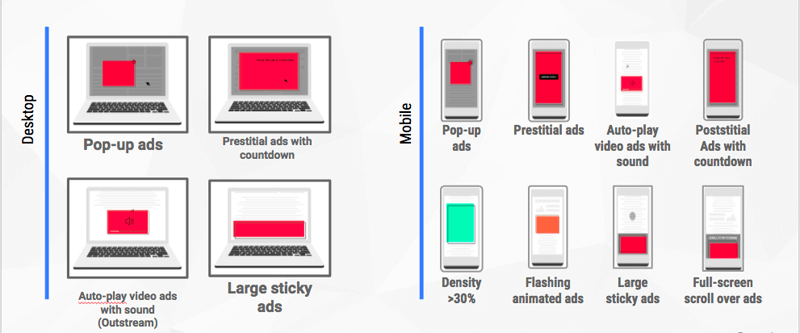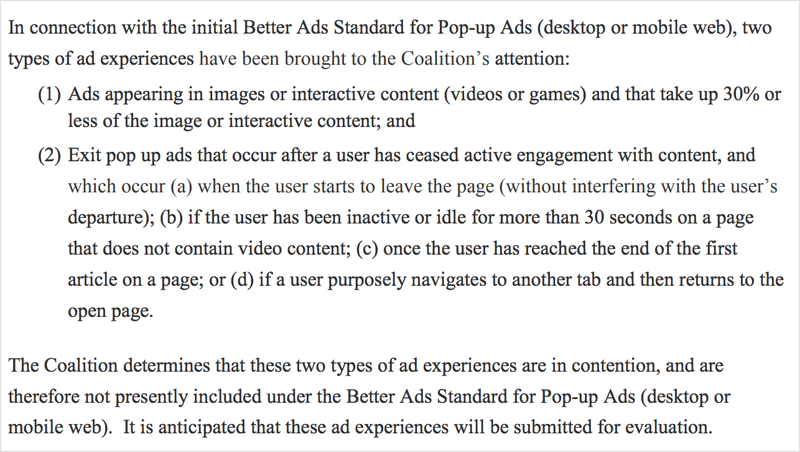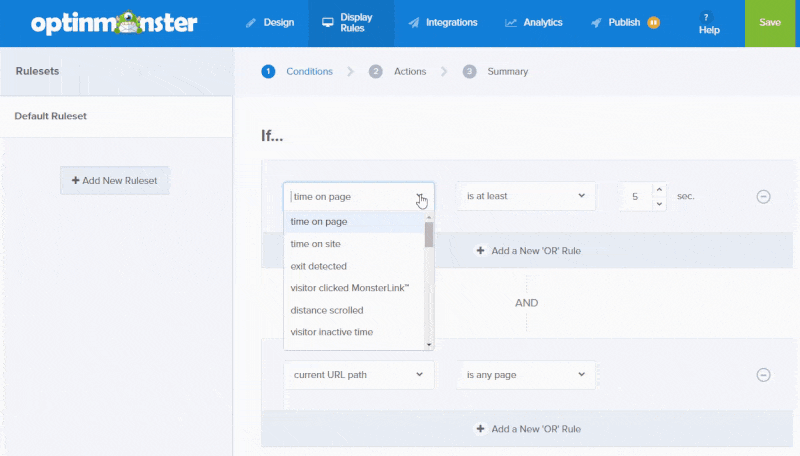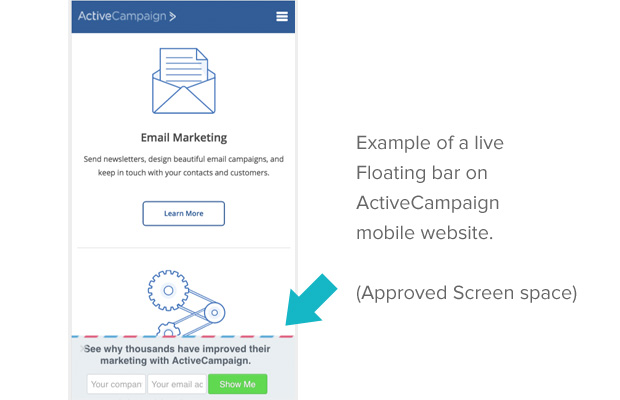If you’ve been following the news over the last several months, then you likely saw that Google is working on launching an ad-blocker inside Google Chrome. According to the official Google Chrome blog, the release is set to go out tomorrow, February 15, 2018.
Like the Google Mobile friendly rule for popups, this announcement has also caused some panic in marketing circles. A lot of misinformation is being spread, and we have received many questions from our users about what this change means for OptinMonster exit-intent popups and other dynamic campaigns.
In this post, we want to explain how the Google Chrome AdBlocker works, what are the Better Ads standard they’re using, and how OptinMonster helps you stay ahead of the curve and convert more visitors into subscribers & customers.
Is This the End of Popups and Other Interactive Optin Forms?
Because of this announcement, several folks are jumping to the conclusion that this Chrome update will lead to the death of popups and other interactive optin forms.
As you can imagine, that’s quite an overstatement.
To help you better understand how these changes impact you, and how OptinMonster helps you stay compliant, we’re going to break down every detail one-by-one.
1. This Is NOT Immediate
While the Chrome ad block feature is going live tomorrow (Feb 15th, 2018), your popups, optin forms, and ads will not be blocked immediately.
Each website goes through a three-step process before it’s added to the ad-block list.
Google is evaluating websites based on the Better Ads standards and then rating them as a pass, warning, or fail.
As a website owner, you can access these evaluations from the Ad Experience Report section inside Google Search Console.
If your website is found to have a high number of violations, then you will receive a notification from Google about the issues that need to be addressed.
You will get 30 days to resolve the issues. If the issues are not resolved, then Chrome will start blocking ads on your site.
2. There Are Different Standards for Desktop vs Mobile
In 2017, Google joined the Coalition for Better Ads, a group that offers specific standards for how the industry should improve ads for consumers. The coalition announced the Better Ads Experience program, which provides guidelines for companies using the Better Ads Standards to improve users’ experience with online ads.
Below are the experiences that are banned from the Better Ads standards:
At first glance, you will look at the image and see that popup ads, fullscreen interstitials, and several other dynamic campaigns are not allowed according to this list.
Sadly most journalists stop at the image and don’t dig deeper.
But if you actually read the description of each ad experience type on the Better Ads Standard page, then you will see that this is actually great news for all of us.
Let me explain why.
3. Not All Popups Are in Violation
The coalition’s goal is to stop annoying popups that load immediately after the page is loaded. I call these zero-second popups, and I, personally, don’t like them.
That’s why OptinMonster allows you to have behavior-based triggers like our signature exit-intent technology, inactivity sensor, scroll-detection, MonsterLinks, and more.
All behavior-based popups pass the current Better Ads Standard as stated in the September 15, 2017, advisory interpretation. Here’s the excerpt from the PDF document:
In other words, if you’re using OptinMonster’s behavior-based triggers, then your website is completely fine.
4. Prestitial Is NOT the Same as Welcome Mat
We often refer to our Fullscreen Welcome Mats as interstitials, but they’re not the same as the prestitial ads defined in the better ads experience.
The specific ad experience that will get your site in the ad-block list is defined as:
Prestitial “Countdown” ads appear before the content of the page has loaded, forcing the user to wait a number of seconds before they can dismiss the ad, or the ad closes on its own.
OptinMonster’s Fullscreen Welcome Mats do not force a user to wait any number of seconds. Users can immediately close the fullscreen.
But again my personal recommendation is to never use zero-second campaigns because they don’t offer the best user experience.
If you combine your fullscreen welcome mats with behavior triggers, then not only will you offer a great user experience on your site, but you will also be on the safe side of the Chrome AdBlock rule.
My Personal Thoughts on the Chrome Ad Blocker
I have had many conversations with our customers and friends over the last few weeks about this topic.
Since we’re humbly considered thought leaders in our industry, everyone wanted to hear my thoughts about this new Chrome AdBlock feature.
I personally think it’s a great initiative because it aligns with our core values and further solidifies our position as a leading behavior automation/conversion marketing platform on the web.
Google is doing this to regulate and punish “spammers” who use aggressive overlays and interstitials that are terrible for user-experience.
One of the reasons why I built OptinMonster was to solve exactly this problem.
I have never liked the idea of aggressive zero-second popups because they’re extremely annoying. That’s why OptinMonster from day-one came with behavior-based triggers like our signature Exit-Intent® technology.
Since then, we have added dozens of behavior automation triggers to help you convert website visitors into email subscribers & customers while offering a great user experience.
I also like that there are different standards for desktop vs mobile. Here at OptinMonster, we believe it’s our duty as marketers to create good user experiences through personalization and automation. That’s why OptinMonster has a device detection rule which lets you create custom campaigns based on a user’s device (desktop, tablet, and mobile)—plus, you can even create mobile-specific campaigns.
So honestly speaking, I am happy that Google has put an ad blocker inside Chrome. It will force other spammy popup solutions to go out of business (or improve their products).
To summarize my thoughts above, below are some actionable tips and insights on how you can better use OptinMonster to stay ahead of the curve.
How OptinMonster Helps You Stay Compliant With Chrome AdBlocker
Here at OptinMonster, our top priority is to help you convert visitors into subscribers while delivering the best user experience.
Below are the ways OptinMonster helps you stay compliant with this new Google Chrome Ad Blocker rule.
1. Use Behavioral Triggers
While we offer time-based delays, I always recommend that everyone use behavior-based triggers like exit-intent, scroll-trigger, and others because they convert better.
Now you have one more reason to use them because they’ll help you stay compliant with the Chrome AdBlocker rule.
Oh, and did I mention, they convert A LOT better while offering a better user experience.
2. Device-Specific Display Rules
If you’re using a fullscreen welcome mat, then I recommend that you use the device-specific rule to limit it to desktop only. Also, it’s always better to use it with behavior-based triggers.

For floating bars and scroll boxes, I recommend customizing the message for mobile so it best fits the screen area.
Here’s an example of OptinMonster floating bar running live on our integration partner, ActiveCampaign.
3. Use MonsterLinks and Content Upgrades
MonsterLinks are not affected by the Chrome adblocker because they are a 2-step optin which only loads when a user clicks on an image or link.
I highly recommend using these with content upgrades (both on desktop and mobile) because you’ll see 5X higher conversions.
See our case studies section to see how other customers are completely crushing it with MonsterLinks.
4. Use On-site Retargeting and On-site Follow Up Campaigns
Although these have nothing to do with the Chrome AdBlocker, I wanted to mention it here because these can significantly boost your conversions.
Using OnSite Retargeting® feature, you can show different campaigns to new vs returning visitors which will allow you to see better conversions.
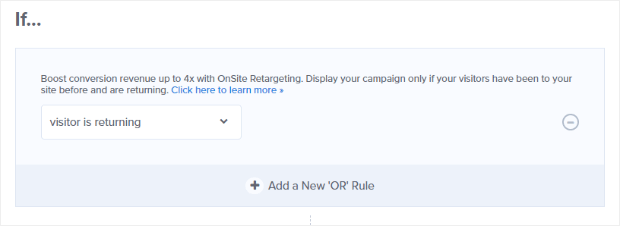
With OnSite Follow-up campaigns® feature, you can show customize campaigns based on user’s previous behavior. For example, if they closed your previous offer, then maybe show them a different offer.
If they opted into your previous campaign, then show them a scroll box to buy or join your Facebook group.
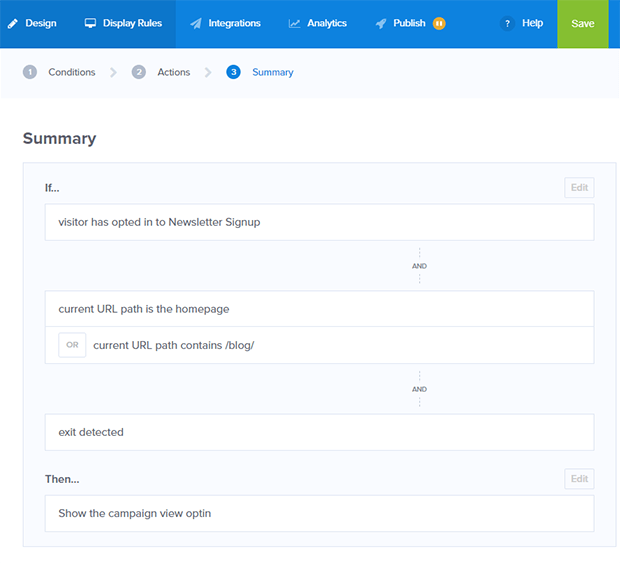
What’s Next?
If you’re using an aggressive zero-second popup, then you might want to replace that with our behavioral triggers this week.
If you have a friend who’s using a spammy lead-generation solution that doesn’t offer behavior-based triggers, then let them know about this post and convince them to use OptinMonster.
Remember, friends don’t let friends use a spammy lead generation solution!
(Yes, we have an affiliate program, so you can even earn some extra ???, too. ?)
But in all seriousness, we’re committed to helping you convert visitors into subscribers while delivering the best user experience.
As always, I want to thank you for using OptinMonster, and we’re proud to help you build your email list in a “Google Friendly” way.
Cheers,
Syed Balkhi
CEO of OptinMonster


